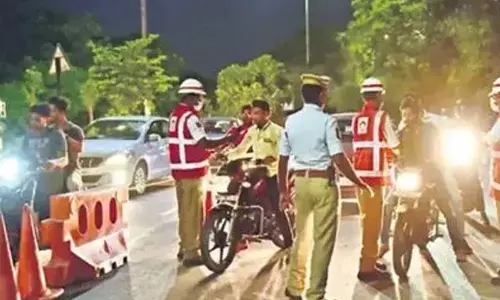Lok Sabha polls 2014: India's election history

the 16th Lok Sabha elections having been announced Wednesday, you invariably start thinking whether the party or alliance of parties
With the schedule for holding the 16th Lok Sabha elections having been announced Wednesday, you invariably start thinking whether the party or alliance of parties that you voted for five years ago has fulfilled the trust you placed in them.
.jpg)
Your assessment is crucial, because your vote this time will be based on an understanding of the ramifications of the exercise of state power. You would also want to assess each party's stand on major issues facing the nation before casting your vote.
Since independence in 1947 from British rule, India has held parliamentary elections 15 times. The five-year term of the 15th Lok Sabha consisting of 543 members elected from 28 states and seven union territories (plus two nominated members) is due to end on May 31, 2014.
The country saw tremendous changes following independence. Jawaharlal Nehru, considered the nation's architect, was appointed prime minister by the Congress party in 1947. Thereafter India managed to sever any remaining links with Britain by choosing to become a sovereign democratic republic in 1950. The next year, the country decided to go in for general elections to constitute the House of the People - the Lok Sabha - as provided for in the constitution.
The number of eligible voters in the first general election in 1951-52 was 105 million. The electorate grew to 714 million in the 2009 polls and will be 814
million in the 16th Lok Sabha polls beginning next month.
In the young nation's first general election in 1951-52, there were three types of constituencies: 314 with single seats, 86 with two seats and one with three seats. The total seats thus were 489 from 401 constituencies. The Congress won 364 seats under the leadership of Jawaharlal Nehru in the inaugural polls. Two seats were reserved for Anglo-Indians.
In the second general elections in 1957 too, there were 91 two-seat constituencies apart from 312 single seat ones. The Congress won 371 seats of the total 494. The multiple-seat constituencies were abolished before the third general elections.
In the 1962 elections, the 18 states and union territories elected 494 members. The Congress remained ahead with 361 seats.
Nehru died on May 27, 1964 after holding office for about 17 years. He was succeeded by Lal Bahadur Shastri, who held power for just over two years.
Shastri became a national hero following the victory in the India-Pakistan war of 1965. His "Jai Jawan Jai Kisan" slogan became very popular during the war, which was formally ended under the Tashkent Agreement of January 10, 1966. Shastri died in Tashkent the following day of a heart attack.
Gulzari Lal Nanda, a Gandhian, was interim prime minister on two occasions for 14 days each after the death of Nehru (from May 27, 1964, to June 9, 1964) and again after the death of Shastri (from Jan 11 to 24, 1966).
Nehru's daughter, Indira Gandhi, held the high office from Jan 24, 1966, to March 24, 1977 and again from Jan 14 to Oct 31,1984, just 300 days short of her father.
The fourth general elections in 1967 saw the Congress tally coming down to 283 in a total of 520 seats, with the Swatantra Party, the Bharatiya Jana Sangh, the SSP and the DMK gaining some strength.
The fifth general elections were held early in March 1971 and the Congress under Indira Gandhi did remarkably well, winning 352 seats out of a total of 518.
The Iron Lady of India alienated a sizable chunk of her supporters by imposing emergency rule in 1975 to save her government from an opposition onslaught after an adverse court verdict.
Four opposition parties - the Congress (O), the Jana Sangh, the Bharatiya Lok Dal and the Socialist Party - fighting the sixth Lok Sabha elections in 1977 under a single banner - Janata Party - defeated the Congress for the first time. Their total was 298 seats in a house of 542. The Congress got pushed down to 153.
The Janata Party, however failed to hold together and yielded ground to the Congress in the seventh general elections in 1980. The Congress, led by Indira Gandhi, won 351 seats.
Indira Gandhi was assassinated on Oct 31, 1984, by two of her Sikh bodyguards, in revenge for the disastrous Operation Bluestar army operation she had ordered earlier in the year to flush out heavily armed militants from Amritsar's Golden Temple. Her son Rajiv Gandhi was elevated to the prime minister's office and soon led the Congress to win the 1984 general elections with 414 seats, the party's highest strength ever.
Rajiv Gandhi got mired in many controversies: the 1984 anti-Sikh riots, the Bhopal Gas Disaster and the Shah Bano case. In 1988, Gandhi reversed a coup in the Maldives, antagonising militant Tamil groups such as PLOTE. He was also responsible for first intervening and then sending the Indian Peace-Keeping Force to Sri Lanka in 1987, which soon ended in open conflict with the Liberation Tigers of Tamil Eelam (LTTE).
In mid-1987, the Bofors scandal damaged his corruption-free image and resulted in a major defeat for his party in the 1989 elections. The Congress could win just 197
seats.
Next Story














